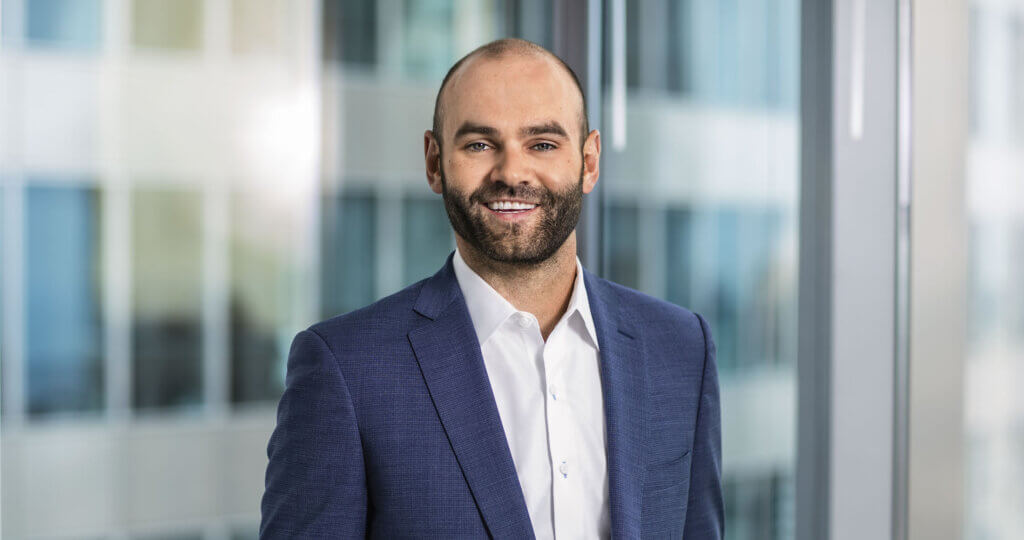“Big price changes occur when market participants are forced to reevaluate their prejudices, not necessarily because the world changes that much.”
– Hedge fund manager Colm O’Shea as quoted in Hedge Fund Market Wizards
Being a big fan of Jack Schwager’s Wizard series of investment books, I eagerly read his newest book, Hedge Fund Market Wizards, and was not disappointed. In 1992, shortly after we had started the Oakmark Fund, I read Schwager’s first book, Market Wizards. Despite having been in the investment business for over a decade at that point, most of my reading had been about other value managers, so I was excited about learning from traders who used completely different investment philosophies than we used at Oakmark. It made me feel my age when many of the managers interviewed in Hedge Fund Market Wizards said how inspirational it was to read Market Wizards when they were in school!
At Oakmark, we are long-term investors. We attempt to identify growing businesses that are managed to benefit their shareholders. We will purchase stock in those businesses only when priced substantially below our estimate of intrinsic value. After purchase, we patiently wait for the gap between stock price and intrinsic value to close.
Like Market Wizards, Hedge Fund Market Wizards is a compilation of interviews with highly successful money managers. These managers range from those whose time horizon is measured in minutes to those who hold positions for years; from those who knew they wanted to invest when they were back in grade school to those who still aren’t sure investing is their calling; and from those with impeccable academic credentials to those without any degrees. But despite their many differences, their similarities were most striking: good intuitive math skills, intense competitive drive, strong work ethic, well-defined investment philosophy and disciplined risk management. And as in Market Wizards, most every chapter discussed early career struggles followed by the discovery of an investing approach that better fit the individual’s personality. I find the Wizard books so thought-provoking because, rather than being just a collection of stories about past investments, they provide insights into how each manager thinks.
The quote at the top of this letter was one of my favorites from this book. As value managers, we often explain that we aren’t forecasting a giant change in the fundamentals of companies we invest in, but rather we expect the stock price to increase significantly when investors change how they think about our companies. When we bought Disney, investors were worried about its theme parks; we were focused on the growth of its most valuable asset, ESPN. When we bought eBay, investors were worried about its market share relative to Amazon; we thought PayPal was so valuable that we were getting its Marketplaces business for free. Today we are focused on the growth of Dell’s non-PC businesses, whereas investors are worried about declining sales of PCs, a division we don’t think we are even paying for. In each case, if we are right, the fundamentals will force investors to reevaluate their prejudices, and we will profit from the repricing of the stock.
Investor prejudice can also cause large sectors of the market to be mispriced. Investors have been taught that large-cap equities tend to be less risky investments than small-cap equities. Big companies generally have longer histories and more diversified businesses that combine to produce less volatile earnings than small companies that are often selling a single product in a single country. That is why large companies have generally been lower risk stocks. But in the late 90s, when small technology companies with excessive valuation premiums displaced big businesses from the large-cap universe, investors who thought large caps were low risk got a double whammy – large-cap stocks’ earnings and P/E multiples both declined sharply. The belief that large cap implied low risk was a prejudice that needed to be reevaluated – lower risk came from the size of the business, not the size of its market cap. The world didn’t change that drastically in 2000, but stock prices did, as investors had to adjust their beliefs. We think that adjustment has gone too far because today large businesses tend to be priced at a discount.
Last month I attended the Morningstar mutual fund conference in Chicago and had a chance to catch up with many of the advisors who have recommended our Funds. A comment many of them made was that they believed long-term bonds were way overpriced, yet they felt forced to own them to lower the risk in their clients’ portfolios. In our finance courses, we all learned that bonds are less risky than stocks. Their returns, if held to maturity, are certain, whereas equity returns remain uncertain regardless of the holding period. But just like we had relatively little history of large-cap stocks that weren’t large businesses, we have relatively little history of bond yields being so close to zero. And when valuations are at extremes, as we believe bonds are today, historical price volatility might not shed much light on future risk.
The 30-year U.S. Treasury Bond today yields about 2.7%. Just 10 years ago, its yield was 5.8%. If five years from now the yield simply returned to its level of a decade ago (and just in case you think I’m cherry picking, over the past 25 years it has averaged a 7.5% yield and at the low in 1981 was twice that), bond investors would suffer a meaningful loss of capital. The principal of the bond would decline by 43%, which would swamp the 14% interest income received over five years, leaving a total loss of 29%. That’s a high price to pay for reducing a portfolio’s risk level.
Contrast that to the S&P 500, which yields just a fraction of a percent less than the bond and we expect will grow earnings at about 6% per year for the next five years. If that growth rate is achieved, the current P/E multiple of 12.9 times would have to fall to 10 times for the S&P price to stay unchanged. The P/E would have to fall to about 7 times to match the loss that the bond investor would sustain if yields reverted to their decade ago level. With a historical average P/E of about 15 times, a 7 times multiple seems like quite an outlier.
That’s just a quantitative way to say that we believe valuation levels today trump the historical analysis of stock and bond volatility. We believe that investors who are trying to reduce risk by selling stocks and buying bonds are probably increasing their risk of losing money. Investors have developed a prejudice about riskiness of asset classes that ignores valuation levels. Prices of stocks and bonds will need to change if investors are forced to reevaluate that prejudice.
I think equity investors are making the same mistake today when they look to the alleged safety of high-yield stocks. Mike Goldstein of Empirical Research Partners has a graph showing that, over the past 60 years, the 100 highest yielding stocks in the S&P 500 have on average sold at about three-quarters of the S&P 500 P/E multiple. The high yielders are typically more mature, slower growth businesses that deserve to sell at a discount P/E. Effectively, a high yield (D/P) is just the inverse of a low price-to-dividend ratio (P/D), a cheapness measure similar to a low price-to-earnings or low price-to-book ratio. Historically, high-yield stocks have been cheap stocks.
Today’s high-yield stocks are quite a different story. The 100 highest yielders in the S&P 500 have a much higher yield than the index – 4.1% vs. 2.5%. The S&P 500 today sells at 12.9 times expected 2012 earnings. If the high yielders sold at their 60-year average discount, they would be priced at less than 10 times earnings. Instead, today’s top 100 yielding stocks sell at 13.9 times expected earnings, more than a 40% relative premium to their historic average. The only reason they yield more than the rest of the S&P is that they pay out so much more of their income – 57% vs. 32%.
Another statistic courtesy of Mike Goldstein is that utility stocks, a high-yield group I call the most bond-like of all stocks, today sell for almost the same P/E multiple as the S&P 500. Since 1970, their average P/E multiple has been about two-thirds of the S&P, and 90% of the time utility stocks have sold at a larger discount than they do today. We believe that investors who are now stretching to get more income from their equity investments are making the same mistake as bond investors – they are ignoring valuation and instead have a misplaced prejudice that high yields will protect them against loss.
At Oakmark, we aren’t avoiding stocks because they have above-average yields, but our expectation is that a high yielder is more likely to be fully priced. We like companies that return capital to shareholders, rather than just accumulate their excess cash. But unlike the bias of many of today’s investors, we are just as happy to see that capital returned through share repurchase as through a large dividend payout. The result of a share repurchase is the same as if the company paid us a dividend and we used it to buy more shares. It’s actually a little better because it defers income tax. Perhaps if the scheduled 2013 tax changes actually become law and dividends are again taxed at a premium to long-term capital gains, investors will become more interested in companies that repurchase their own shares. The world wouldn’t have to change that much for high-payout companies to lose their luster.
As of 6/30/12, The Walt Disney Co. represented 1.6%, eBay, Inc. 2.4%, Amazon.com, Inc. 0%, and Dell, Inc. 1.9% of The Oakmark Fund’s total net assets. Portfolio holdings are subject to change without notice and are not intended as recommendations of individual stocks.
As of 6/30/12, The Walt Disney Co. represented 0%, eBay, Inc. 5.0%, Amazon.com, Inc. 0%, and Dell, Inc. 3.8% of The Oakmark Select Fund’s total net assets. Portfolio holdings are subject to change without notice and are not intended as recommendations of individual stocks.
The Price-Earnings Ratio (“P/E”) is the most common measure of the expensiveness of a stock.
The S&P 500 Index is a broad market-weighted average of U.S. blue-chip companies. This index is unmanaged and investors cannot actually make investments in this index.
The discussion of the Funds’ investments and investment strategy (including current investment themes, the portfolio managers’ research and investment process, and portfolio characteristics) represents the Funds’ investments and the views of the portfolio managers and Harris Associates L.P., the Funds’ investment adviser, at the time of this letter, and are subject to change without notice.





